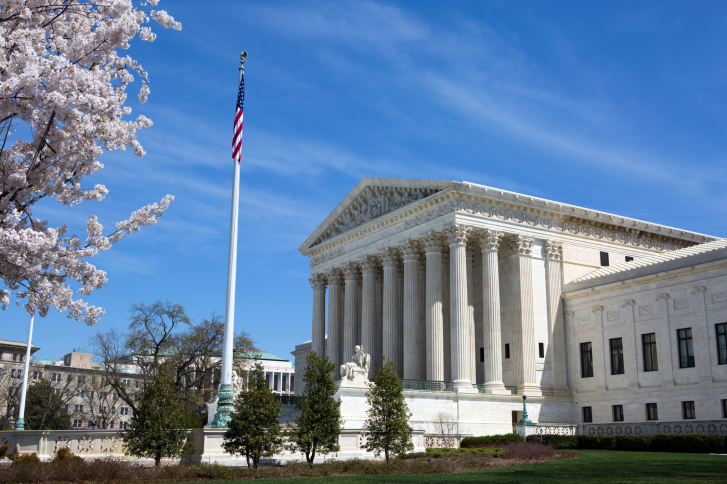Sixty-eight years ago, Franklin Roosevelt told the nation, “There is nothing to fear but fear itself.” Judging by today’s standards, it could be he just wasn’t looking hard enough.
Barely a day goes by that the media, or some special interest group, doesn’t give us something to fret about. We’ve been warned about everything from cell phones to taco shells, from Alka-Seltzer to those ubiquitous scooters that every kid seems to have now. Even peanuts on airplanes have been put under suspicion.
What book best captures the spirit of our fearful times? My vote goes to a volume I found a few months ago in an offbeat bookstore in Philadelphia: I’m Afraid, You’re Afraid: 448 Things to Fear and Why. This handy volume, authored by Melinda Muse, is an A-to-Z compendium of everything that can go bump in the night or day, from abstinence to zippers. It’s enough to make you just stay in your house and never go out.
The book is must reading for anyone who hasn’t yet found enough to fear. Have a banister at home? The Consumer Product Safety Commission reports over 34,000 handrail injuries each year. Daughter trying out for cheerleading? Not so fast; the National Cheerleaders Association reported more than 6,000 pep-related injuries in one year. Lawn overgrown? Don’t even think about mowing it, not with up to 400,000 mower mishaps annually. Watering the lawn is far safer, with only 12,000 hose-related accidents each year.
Fred Smith, president of the Competitive Enterprise Institute, likes the opera . . . but he should be careful. The English Auto Club has warned that listening to “The Ride of the Valkyries” while driving can lead to road rage. And for you political junkies, even Florida is revealed as a danger. Not for vote-counting injuries, but for sharks, melanoma, gators, and bike accidents (most in the country).
I’m Afraid, You’re Afraid is meant to be tongue-in-cheek (at least I hope that’s the case), but it does underscore a growing trend in America toward what Barry Glassner of the University of Southern California calls “a culture of fear.” The reasons are unclear. One is no doubt the incentive of the media to get cheap ratings points, or that of politicians for cheap votes. Another may be some deep-seated psychological need for fear.
Have to admit, it’s getting better
Whatever the cause, the growth of fear is at odds with what’s happening in the real world, where things are inexorably getting healthier and safer. For confirmation, take a look at another just-released book, It’s Getting Better All the Time: 100 Greatest Trends of the Last 100 Years (Washington, DC: Cato Institute, 2000).
Written by Stephen Moore and the late Julian Simon, this book, in page after page of charts and graphs, documents how the human condition improved during the twentieth century. Life expectancy has increased. Major diseases such as whooping cough and typhoid have been nearly eliminated. People get fewer cavities. Food costs less. There are fewer fatal accidents. Natural disasters kill fewer people. The list goes on and on. The relentless optimism of Simon and Moore’s facts is a sure antidote to any lingering effects you may have from I’m Afraid, You’re Afraid, as well as the general culture of fear.
There are still dangers out there, I don’t mean to deny that. And strangely, one class of dangers actually has been understated by the media: those actually caused or exacerbated by government action.
In a recent Wall Street Journal op-ed, for instance, Sam Kazman of the Competitive Enterprise Institute pointed out that because of fuel economy standards and other regulations, the federal government may have endangered far more Americans than Firestone tires ever have. Similarly, CEI’s Greg Conko has pointed out how government restrictions on biotechnology could foil our best chance for reducing hunger. Meanwhile, a new CEI study by Roger Bate documents how a proposed worldwide ban on DDT could perversely lead to hundreds of thousands of malaria deaths in Africa.
Perhaps the next edition of I’m Afraid, You’re Afraid should include a 449th thing to fear: government regulation. Now that’s something that should keep you up at night.
James L. Gattuso is vice president for policy and management at the Competitive Enterprise Institute. This article first appeared in the October/November 2000 issue of CEI Update and is reprinted here with the permission of the Competitive Enterprise Institute.
For more information . . .
I’m Afraid, You’re Afraid (New York, NY: Hyperion, 2000) is available for $10.36 from Amazon.com. The Cato Institute’s It’s Getting Better All the Time is available on the Cato Web site for $22.95 cloth, $14.95 paperback. Go directly to the Cato Web store at http://www.cato.org/cgi-bin/Web_store/web_store.cgi, or purchase this book from Amazon.com.



